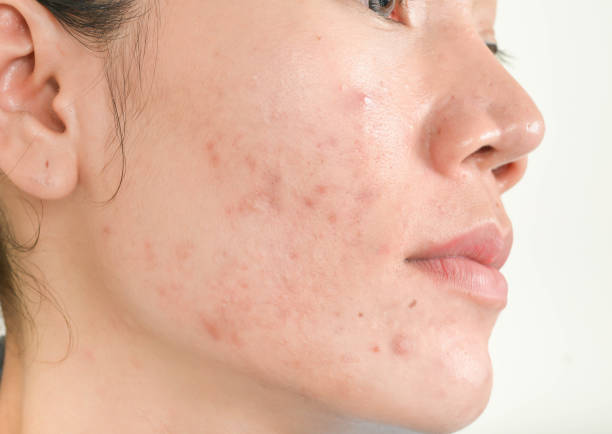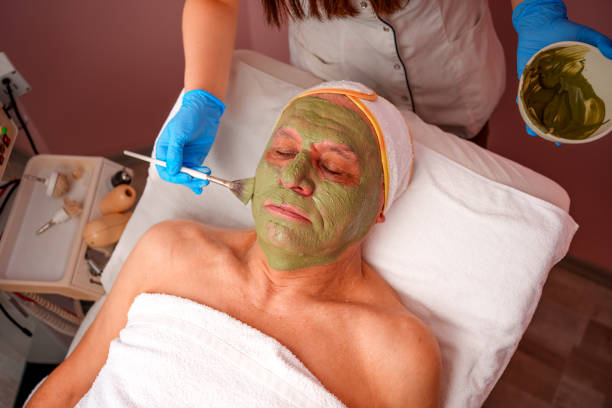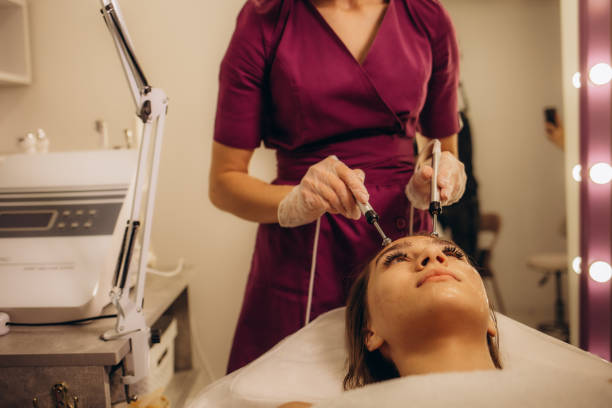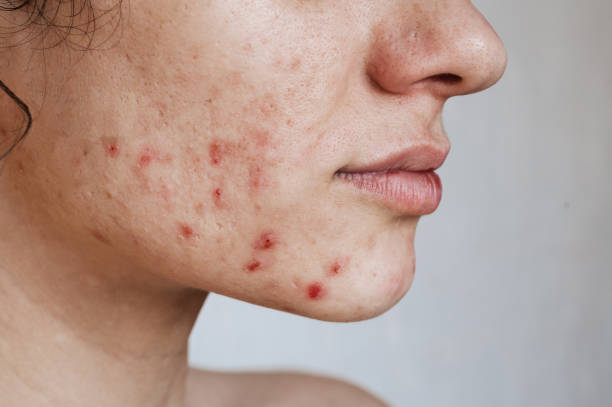Introduction
Skin Acne pimples and pimples, is a common skin problem nowadays. This happens when the sebaceous glands (which make up the oily substance under the skin) produce too much oil and this oil mixes with the clogged pores.
Blackheads grow from pimples on top of his skin. Acne tends to occur on the scalp, chest, and back, but it can occur anywhere there are sebaceous glands. It’s important to understand that acne is a chronic condition that can be worsened by stress, hormonal changes, and an unhealthy lifestyle.
2. Common causes of acne: and factors

Four things cause acne breakouts: overproduction of sebum, clogged pores, bacteria, and inflammation. When the sebaceous glands produce too much oil, the oil mixes with dead skin cells and dirt, blocking the pores. Does the blockage cause bacteria to grow, causing inflammation and pus? Hormonal changes, puberty, pregnancy, and menstruation can also trigger acne. Unhealthy diet and stress also aggravate the problem.
3. Different types of acne and their identification
The different types of Skin Acne are: blackheads, whiteheads, pustules, nodules, and cysts. Blackheads, also called open comedones, appear as black dots on the surface of the skin. Whiteheads, i.e. closed comedones, appear as white lumps under the skin. Pustules, which are infected bumps, are filled with pus and are accompanied by intense pain and redness. There are severe forms of nodules and cysts that penetrate deep into the skin and can cause long-term scarring.
4. Acne symptoms and their effect
Symptoms of acne include pimples, blackheads, whiteheads, and cysts. These symptoms are most noticeable on the face, but can also appear on the chest and back. In addition to acne, the affected areas also experience redness, swelling, and irritation. In severe cases, acne can deeply affect the skin and cause permanent scarring or pigmentation. These symptoms also create emotional and psychological stress, which affects the overall quality of life.
5. Acne Diagnosis and Treatment Options
Acne is easy to diagnose and can be easily detected by visual examination. But if the acne is severe, a consultation with a dermatologist is necessary. Treatment options include topical treatments, oral medications, and lifestyle changes. Basic treatments include salicylic acid, benzoyl peroxide, and retinoids that are applied directly to the acne. Oral medications, such as antibiotics and hormonal therapy, are used in severe cases. Lifestyle changes, including a balanced diet and stress management, can also help control acne.
6. Home Remedies and Natural Solutions for Acne

Home remedies and natural solutions can be an effective way to manage acne. Aloe vera gel, which is packed with anti-inflammatory properties, can help reduce the redness and irritation of acne. A mixture of honey and cinnamon is also beneficial for acne as it has antibacterial and antifungal properties. Green tea extract, rich in antioxidants, helps improve skin health and reduce acne breakouts. Also, tea tree oil is a popular natural remedy that is effective in treating acne.
7. Acne Prevention Tips and Tricks
It is important to follow some precautions to avoid acne. Regularly wash your face with a gentle cleanser and exfoliate to remove dead skin cells or excess oil. Sticking to oil-free and non-comedogenic skin care products works to prevent acne breakouts. Maintaining a healthy diet and avoiding processed foods also helps prevent acne. Meditation and regular exercise are also beneficial for managing stress. Finally, keep your hands away from your face and avoid touching acne-prone areas.
8. Living with Acne: Psychological Effects and Coping Strategies
The psychological impact of acne is significant, which can negatively affect one’s self-esteem and confidence. This problem can affect any age group, and it can also lead to social anxiety and depression.
Coping strategies for living with acne are strong, such as joining support groups and consulting with a mental health professional. Positive thinking and self-care practices also support emotional well-being. Along with acne treatment, it’s important to focus on self-acceptance and personal growth.
9. Occupational therapy and modern therapy

If home remedies and over-the-counter products aren’t effective, consider professional treatments as well as more advanced treatments. Chemical peels exfoliate the top layers of the skin, reducing acne scars and blemishes.
Laser therapy, which uses targeted light beams, treats acne and acne scars. Microdermabrasion, which gently exfoliates the skin, is also an effective treatment. A consultation with a dermatologist is essential to make a proper treatment plan.
10. Acne treatment success rates and long-term management
The success rate of treating acne varies depending on the severity and individual response. Early intervention and consistent treatment can control acne and long-term management is achievable. Acne treatment results are usually visible, with patience and a proper skin care routine for complete healing.
Follow-up consultations and treatment adjustments are also necessary to achieve optimal results. Healthy lifestyle choices and skin care routines also play an important role in long-term management.
This article gives you a detailed understanding of acne causes, symptoms, and solutions. Acne can be a challenging condition, but it can be effectively managed with the right treatment and precautions.

[…] το δέρμα σας στην καλύτερη φόρμα. Η χρήση αντηλιακού Skin Love , ο καθαρισμός, η τόνωση και η ενυδάτωση είναι τα […]